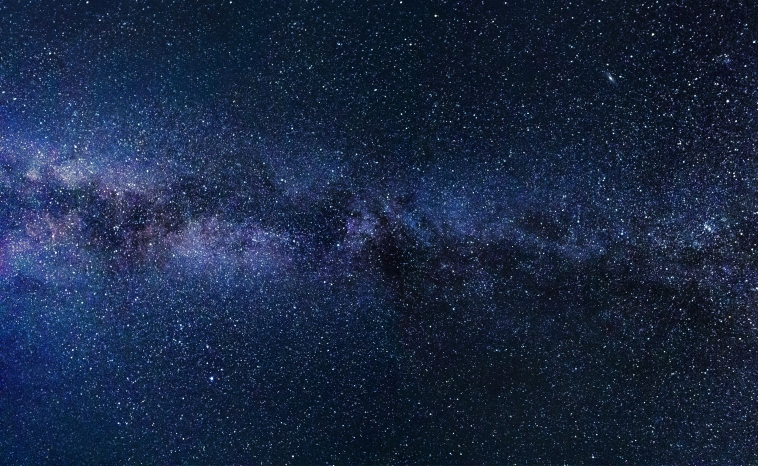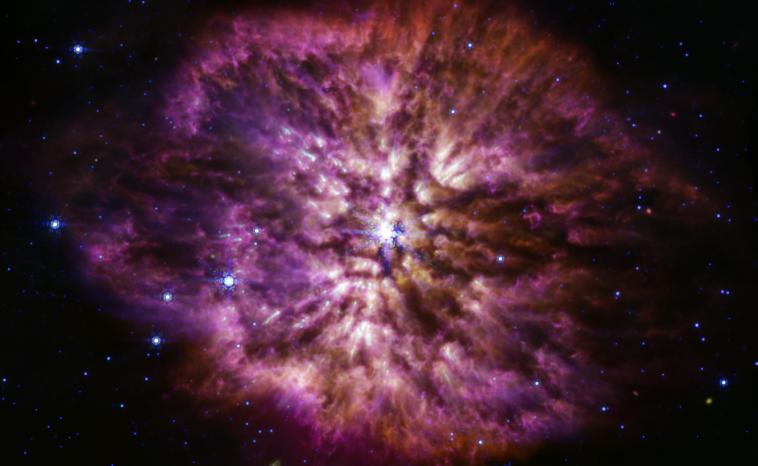Why Do Stars Shine? A Journey Inside a Stellar Core

Why do stars shine? Learn more about their fascinating composition and the mechanisms that power their brilliance!
When we gaze at the night sky, we see countless points of light twinkling across the vast expanse of space. But have you ever wondered – why do stars shine? The answer lies in the heart of a star – its stellar core. Let’s dive into the fascinating science behind the inner workings of stars and uncover the secrets of their brilliance.
What Are Stars Made Of?

Stars are massive celestial bodies composed primarily of hydrogen and helium, the two lightest and most abundant elements in the universe. These gases are pulled together by the immense force of gravity, forming a fiery sphere of plasma. Hydrogen, the simplest and most abundant element, serves as the primary fuel for stars, while helium is produced as a byproduct of nuclear fusion.
The composition of stars evolves as they age. Main sequence stars, like our Sun, consist mainly of hydrogen with a smaller proportion of helium and trace amounts of heavier elements such as carbon, oxygen, and nitrogen. As stars progress through their lifecycles, they begin to synthesise heavier elements in their cores, enriching their composition with materials like iron, silicon, and magnesium. These changes mark different stages in a star’s evolution and influence its ultimate fate.
The Stellar Core: Where the Magic Happens
At the centre of every star lies its core, an extraordinary region of intense heat and pressure. This is the powerhouse of the star, where temperatures soar to millions of degrees Celsius. For example, in a star like our Sun, the core reaches temperatures of around 15 million degrees Celsius. In more massive stars, the core can exceed 100 million degrees Celsius. This extreme environment sets the stage for nuclear fusion, the process that powers stars.
The Lifecycle of a Star

CREDIT: NASA's James Webb Space Telescope from Greenbelt, MD, USA, CC BY 2.0, via Wikimedia Commons
CREDIT: NASA’s James Webb Space Telescope from Greenbelt, MD, USA, CC BY 2.0, via Wikimedia CommonsStars are born from vast clouds of gas and dust known as nebulae. Over time, gravity pulls these materials together, forming a dense region called a protostar. As the protostar grows in mass, its core heats up, and once the conditions are right, nuclear fusion begins. At this point, the star enters its main sequence phase, where it spends the majority of its life converting hydrogen into helium.
As stars exhaust their hydrogen fuel, their fate depends on their mass. Smaller stars, like our Sun, expand into red giants as their outer layers swell. Eventually, these stars shed their outer layers, creating beautiful planetary nebulae, while their cores contract into dense white dwarfs. Larger stars undergo more dramatic endings. When their fuel runs out, they explode in spectacular supernovae, leaving behind dense neutron stars or even black holes. Each stage of a star’s lifecycle contributes to the cosmic recycling of elements, seeding the universe with materials for new stars and planets.
Why Do Stars Shine? The Role of Nuclear Fusion
Nuclear fusion is the engine behind a star’s brilliance. In the core, hydrogen nuclei (protons) collide with tremendous force, overcoming their natural repulsion and merging to form helium. This process is called hydrogen burning, and it releases vast quantities of energy as light and heat.
The fusion process begins with hydrogen burning, which is the dominant energy source for main sequence stars. Four hydrogen nuclei fuse together in a series of reactions to form a single helium nucleus, accompanied by the release of energy in the form of gamma rays. As stars age and their hydrogen reserves diminish, they begin fusing helium into heavier elements such as carbon and oxygen. In the most massive stars, fusion continues with elements like silicon and eventually iron, marking the star’s final stages of life.
This fusion-generated energy travels outward from the core, first through the radiation zone, where it is absorbed and re-emitted countless times, and then through the convective zone, where it is carried by currents of hot plasma. Eventually, the energy reaches the surface and radiates into space as the light and heat that make stars shine.
Balancing Forces: Gravity vs. Pressure
The life of a star is a delicate balancing act between two opposing forces: gravity and radiation pressure. Gravity, the force that pulls matter inward, tries to compress the star’s mass towards its core. At the same time, radiation pressure, generated by the energy from nuclear fusion, pushes outward. This equilibrium is essential to a star’s stability and longevity.
If the rate of fusion decreases, gravity begins to dominate, compressing the star further and increasing the core’s temperature and pressure. This reignites fusion and restores the balance. Conversely, if fusion becomes too vigorous, radiation pressure increases, causing the star to expand slightly and cool, which then reduces the fusion rate. This dynamic feedback loop ensures that stars remain stable for billions of years, maintaining their luminosity and size.
Why Do Stars Twinkle?
The twinkling of stars, known as stellar scintillation, is not caused by the stars themselves but by Earth’s atmosphere. As starlight travels through layers of air with varying temperatures and densities, it bends and scatters, creating the illusion of a twinkle. If you were to observe the same stars from space, outside the atmosphere, they would shine steadily, revealing their true, unwavering brilliance.
Why Do Stars Shine? Final Thoughts

Understanding what makes a star shine deepens our appreciation for the night sky. From the fusion reactions in their cores to the light that reaches our eyes, stars are a constant reminder of the wonders of nature.
If you’re captivated by the magic of the stars, why not name one for someone special? With the Online Star Register, you can create a unique gift that’s as eternal as the cosmos itself. Explore the OSR Gift Pack and bring the beauty of the stars closer to your loved ones.

